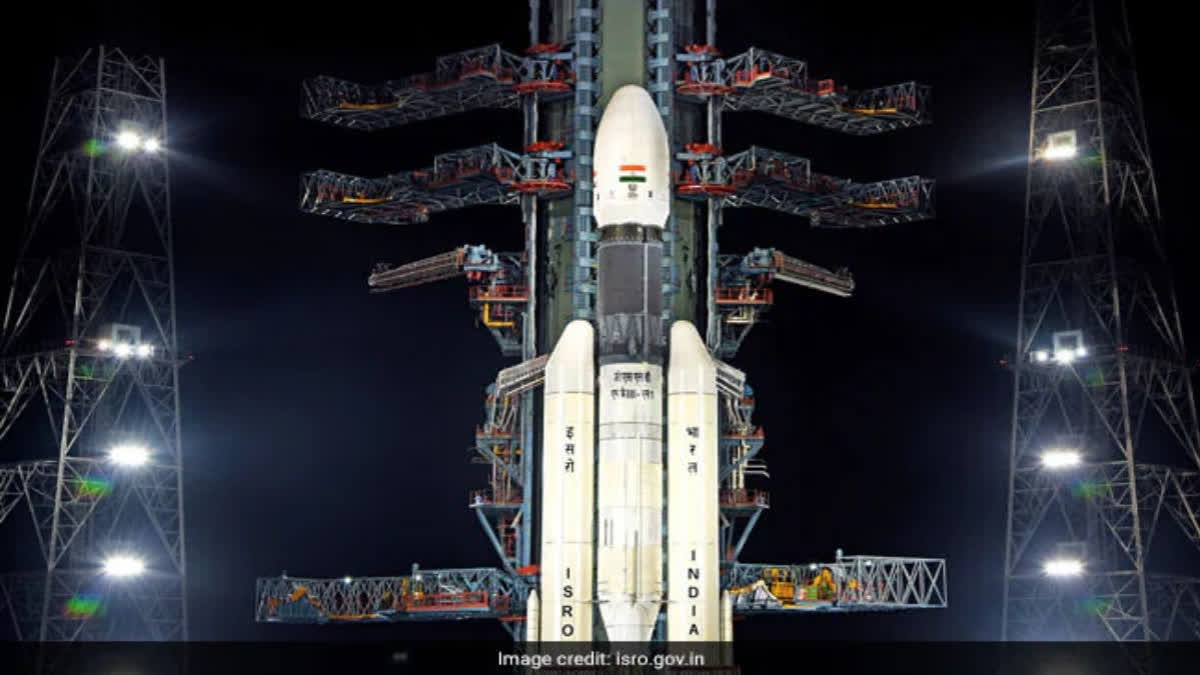Hyderabad: The Indian Space Research Organization (ISRO) has officially announced the launch date for the Chandrayaan-3 mission. After careful consideration and planning, it has been confirmed that Chandrayaan-3 will take off on July 14 at 2:35 PM and will attempt a soft landing on the moon on August 23 or August 4. Initially, ISRO had set a tentative launch window between July 12 and 19, but the agency has now finalized the date.
The main focus of the Chandrayaan-3 mission is to achieve a safe and successful landing on the lunar surface. S. Somnath, the Chairman of ISRO, stated that the mission will attempt a 'soft landing' on the Moon around August 23 or 24. This ambitious endeavour represents another significant milestone for India's burgeoning space sector.
-
Announcing the launch of Chandrayaan-3:
— ISRO (@isro) July 6, 2023 " class="align-text-top noRightClick twitterSection" data="
🚀LVM3-M4/Chandrayaan-3 🛰️Mission:
The launch is now scheduled for
📆July 14, 2023, at 2:35 pm IST
from SDSC, Sriharikota
Stay tuned for the updates!
">Announcing the launch of Chandrayaan-3:
— ISRO (@isro) July 6, 2023
🚀LVM3-M4/Chandrayaan-3 🛰️Mission:
The launch is now scheduled for
📆July 14, 2023, at 2:35 pm IST
from SDSC, Sriharikota
Stay tuned for the updates!Announcing the launch of Chandrayaan-3:
— ISRO (@isro) July 6, 2023
🚀LVM3-M4/Chandrayaan-3 🛰️Mission:
The launch is now scheduled for
📆July 14, 2023, at 2:35 pm IST
from SDSC, Sriharikota
Stay tuned for the updates!
In preparation for the launch, ISRO has successfully integrated the Chandrayaan-3 spacecraft with the Launch Vehicle Mark-III (LVM3) at the Sathish Dhawan Space Centre in Sriharikota. This crucial step ensures that the spacecraft and the launch vehicle are ready for the upcoming mission. The integration process was completed ahead of schedule, setting the stage for the planned launch on July 14 at 2:30 PM.
The primary objective of the Chandrayaan-3 mission is to demonstrate India's capability for a soft landing on the Moon. This will be achieved by delivering a lander and a rover to the lunar surface. The mission serves as a follow-up to the Chandrayaan-2 mission, which encountered an unexpected setback during its landing attempt. Chandrayaan-3 aims to rectify the previous mission's shortcomings and accomplish a successful soft landing.
The Chandrayaan-3 spacecraft consists of three key components: the lander module, the propulsion module, and a rover. The lander module is specifically designed to achieve a soft landing at a predetermined location on the Moon, where it will deploy the rover. The rover's primary function is to conduct chemical analyses of the lunar surface and carry out various scientific experiments.
The propulsion module plays a critical role in transporting the lander and rover from the "launch vehicle injection" stage to a 100-kilometer circular polar lunar orbit before separating from the other modules. Additionally, the propulsion module carries its own scientific payload, which will commence operations after separation.
Also read: Hours ahead of Chandrayaan-3 mission next week, Sriharikota to witness a unique 'launch'
To facilitate the launch of the Chandrayaan-3 mission, ISRO will utilize the Launch Vehicle Mark-III (LVM-3), also known as GSLV Mark III. Developed by ISRO, the LVM-3 is the most powerful rocket in the organization's fleet. Standing at an impressive height of 43.5 meters with a diameter of 4 meters, it has a lift-off mass of 640 tonnes.
The LVM-3 has an impressive payload capacity, capable of transporting up to 8,000 kilograms to a Low-Earth orbit and approximately 4,000 kilograms to a geostationary transfer orbit. It utilizes two solid rocket boosters along with a core liquid stage propelled by two L110 liquid-stage Vikas rockets to provide the necessary thrust for a successful launch.
With the successful integration of the Chandrayaan-3 spacecraft and LVM-3, ISRO is now fully focused on the highly anticipated launch scheduled for July 13. The mission aims not only to demonstrate India's technological prowess in lunar exploration but also to contribute to scientific advancements through the analysis of the Moon's surface.
The Chandrayaan-3 mission holds the promise of achieving a successful soft landing on the Moon, expanding our understanding of Earth's celestial neighbour, and pushing the boundaries of space exploration.



